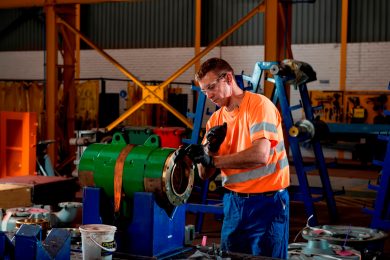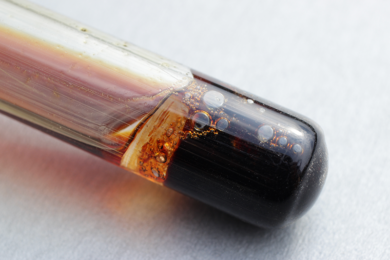To allow each mining customer to choose the most effective maintenance strategy for its particular conditions, Weir Minerals is offering ‘infinite flexibility’ in its range of solutions to keep its equipment operating at the lowest cost per tonne over its full life cycle.
According to Kobus Fourie, Global Services Manager for Weir Minerals, there is a refocus in the world of maintenance, as the mining industry gains a better understanding of the value of total asset management carried out by the original equipment manufacturer (OEM).
“The involvement of the OEM in ongoing plant maintenance can really make a difference to reliability while reducing maintenance costs in the long term,” says Fourie. “So, to ensure that every customer can take advantage of these benefits, Weir Minerals is extremely flexible in how we structure our support to suit any environment.”
These maintenance arrangements include a cost-per-tonne model, which allows mines to budget a set premium for a pre-determined production rate. Another option is the repair-and-exchange model, where the OEM keeps key stock related to the specific customer’s requirements, so it can supply what would normally be long lead time items in just a few hours.
He highlights that the OEM supplier is in the best position to understand and support their products optimally, and this is recognised by most mining companies, who will closely link their own maintenance programmes to the aftermarket services that the OEM can provide.
“Through our service capacity, OEM’s are playing an increasingly important role in mining,” he says. “We can do this because our knowledge base – earned through extensive and ongoing investment in research and development – is well established.”
The OEM’s focus is on the capabilities and life cycle of their products, and the customer can use this focus to their advantage. “The benefits of having an OEM maintain their own equipment far outweighs the costs, especially if you take into account the indirect cost of downtime due to the more frequent breakdowns often resulting from the use of a non-OEM part, for example,” he says.
He also emphasises the safety aspect of good maintenance strategies, reiterating the importance – for both the OEM and the customer – of a safe working environment in the plant. “If you start to alter a product with non-OEM replacement parts, it can not only put the reliability and integrity of the equipment at risk, but also the safety of the people that work around the equipment,” he says.
Fourie acknowledges that applying a long term approach to maintenance is not always easy in the mining sector, as volatility in commodity prices creates uncertainty around the life-of-mine expectations at many operations.
“A more stable outlook allows mines to make better decisions about investing in the longevity of their critical-path plant and equipment,” he says. “Nonetheless, the key differentiator among mining competitors is a systematic approach to maintenance that can be applied irrespective of the prevailing economic climate.”
Weir Minerals pushes the envelope with maintenance options, to place the focus on total solutions. This, in his opinion, is what the mining industry needs; mines should be allowed to focus on their core business, which is to process minerals, while OEMs should support that objective by maintaining and operating their equipment to ensure lowest cost production.
“We have also joined forces with industry leading innovators Dell and Microsoft to develop cutting edge condition monitoring as part of our maintenance offering, so that we can take preventative maintenance to the next level,” says Fourie. “In time, we will be able to predict equipment failure, and apply interventions before such failure occurs; this will provide further savings to customers by avoiding lost production due to unscheduled downtime.”










